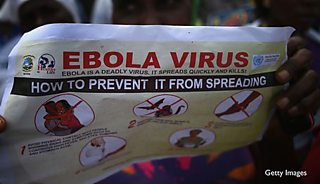Ebola: audience research by mobile phone
Dorothy Peprah
Research Manager

As we tentatively celebrate the recovery of Beatrice Yardolo, the last known Ebola patient to be discharged from a treatment centre in Liberia, Βι¶ΉΤΌΕΔ Media Action continues working on programmes and training across the region to ensure Ebola is minimised.
Radio programmes like have played a crucial role in stemming the outbreak. But how could we measure this when the normal methods of audience research – face to face interactions with listeners – were off limits?
Human to human exchanges
The Ebola virus outbreak was at its peak when the first episodes aired. Programmes like encouraged people to avoid close physical contact – since Ebola is passed on through bodily fluids. Our usual research methods were therefore potential risk factors for contracting and spreading a highly infectious disease.
Finding solutions
In the face of this challenge, we opted to use a mobile phone survey to reach our audience in Liberia. The first round of data showed reached 85% of those surveyed. While we accepted this methodology meant we could only reach those Liberians with access to a mobile phone (estimated to be 42%), it would still provide very useful data in challenging times. Over 80% respondents found highly relevant, trustworthy and a platform to voice their concerns with 91% taking life-saving action, such as avoiding physical contact and washing hands.
Learning and ongoing conversations
As continues, we anticipate further rounds of mobile surveying along with carefully considered focus group discussions.
We’ve learnt a lot, and importantly, we’ve gained vital mobile phone survey experience, a research method to deploy in situations when human contact needs to be minimised.
Related links
- Follow Βι¶ΉΤΌΕΔ Media Action on and
